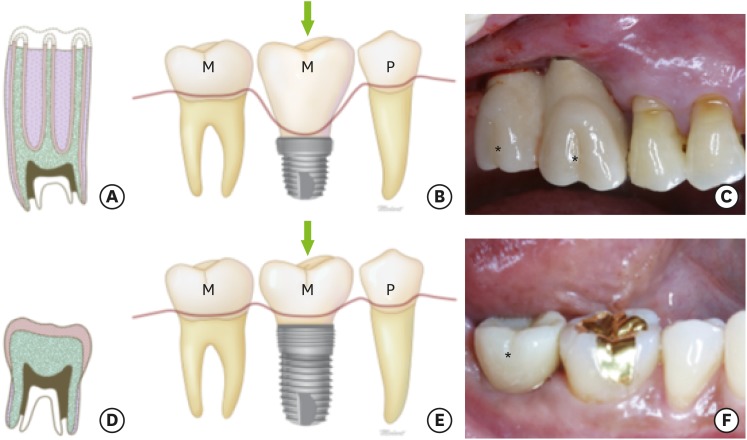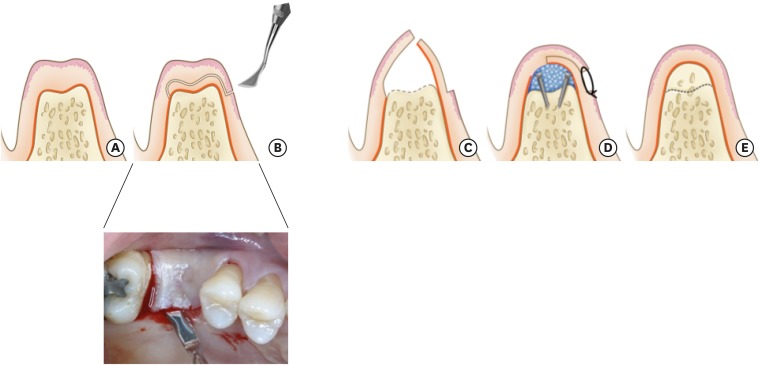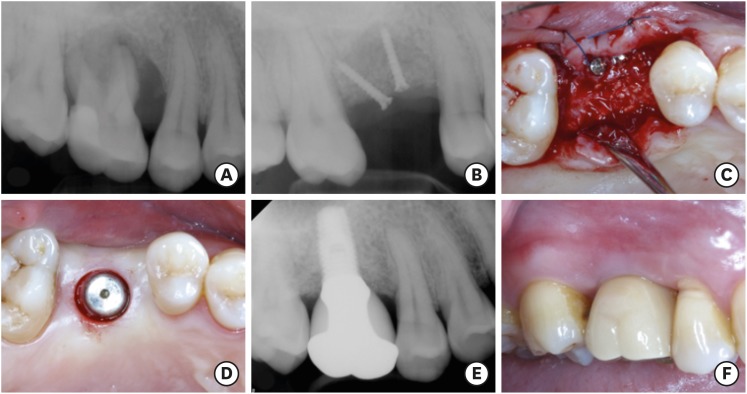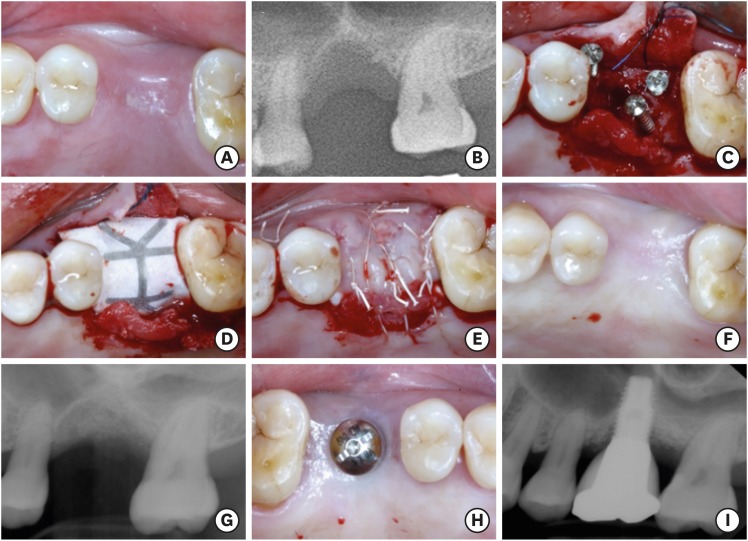1. Satloff D. Dental implant success. J Am Dent Assoc. 2002; 133:1040. 1042.

2. Zarb GA, Albrektsson T. Consensus report: towards optimized treatment outcomes for dental implants. J Prosthet Dent. 1998; 80:641. PMID:
9830066.
3. Adell R, Lekholm U, Rockler B, Brånemark PI. A 15-year study of osseointegrated implants in the treatment of the edentulous jaw. Int J Oral Surg. 1981; 10:387–416. PMID:
6809663.

4. Jivraj S, Chee W. Treatment planning of implants in posterior quadrants. Br Dent J. 2006; 201:13–23. PMID:
16829878.

5. Buser D, Dula K, Belser UC, Hirt HP, Berthold H. Localized ridge augmentation using guided bone regeneration. II. surgical procedure in the mandible. Int J Periodontics Restorative Dent. 1995; 15:10–29. PMID:
7591520.
6. Handelsman M. Surgical guidelines for dental implant placement. Br Dent J. 2006; 201:139–152. PMID:
16902543.

7. Garaicoa-Pazmiño C, Suárez-López del Amo F, Monje A, Catena A, Ortega-Oller I, Galindo-Moreno P, et al. Influence of crown/implant ratio on marginal bone loss: a systematic review. J Periodontol. 2014; 85:1214–1221. PMID:
24444399.

8. Birdi H, Schulte J, Kovacs A, Weed M, Chuang SK. Crown-to-implant ratios of short-length implants. J Oral Implantol. 2010; 36:425–433. PMID:
20545533.

9. Glantz PO, Nilner K. Biomechanical aspects of prosthetic implant-borne reconstructions. Periodontol 2000. 1998; 17:119–124. PMID:
10337319.

10. Lee KJ, Kim YG, Park JW, Lee JM, Suh JY. Influence of crown-to-implant ratio on periimplant marginal bone loss in the posterior region: a five-year retrospective study. J Periodontal Implant Sci. 2012; 42:231–236. PMID:
23346467.

11. Sanz I, Garcia-Gargallo M, Herrera D, Martin C, Figuero E, Sanz M. Surgical protocols for early implant placement in post-extraction sockets: a systematic review. Clin Oral Implants Res. 2012; 23(Suppl 5):67–79.

12. Vignoletti F, Matesanz P, Rodrigo D, Figuero E, Martin C, Sanz M. Surgical protocols for ridge preservation after tooth extraction. A systematic review. Clin Oral Implants Res. 2012; 23(Suppl 5):22–38.

13. Greenstein G, Greenstein B, Cavallaro J, Tarnow D. The role of bone decortication in enhancing the results of guided bone regeneration: a literature review. J Periodontol. 2009; 80:175–189. PMID:
19186957.

14. Nobre AM, Maló PS, Oliveira SH. The influence of implant location and position characteristics on peri-implant pathology. Eur J Prosthodont Restor Dent. 2014; 22:125–129. PMID:
25831714.
15. Renvert S, Persson GR. Periodontitis as a potential risk factor for peri-implantitis. J Clin Periodontol. 2009; 36(Suppl 10):9–14. PMID:
19432626.

16. Warrer K, Buser D, Lang NP, Karring T. Plaque-induced peri-implantitis in the presence or absence of keratinized mucosa. An experimental study in monkeys. Clin Oral Implants Res. 1995; 6:131–138. PMID:
7578788.

17. Souza AB, Tormena M, Matarazzo F, Araújo MG. The influence of peri-implant keratinized mucosa on brushing discomfort and peri-implant tissue health. Clin Oral Implants Res. 2016; 27:650–655. PMID:
26474541.

18. Halperin-Sternfeld M, Zigdon-Giladi H, Machtei EE. The association between shallow vestibular depth and peri-implant parameters: a retrospective 6 years longitudinal study. J Clin Periodontol. 2016; 43:305–310. PMID:
26718112.
19. Romanos GE. Periosteal releasing incision for successful coverage of augmented sites. A technical note. J Oral Implantol. 2010; 36:25–30. PMID:
20218867.

20. Hur Y, Tsukiyama T, Yoon TH, Griffin T. Double flap incision design for guided bone regeneration: a novel technique and clinical considerations. J Periodontol. 2010; 81:945–952. PMID:
20450365.

21. Lee D, Sohn B, Kim KH, Kim S, Koo KT, Kim TI, et al. Effects of untreated periodontitis on osseointegration of dental implants in a beagle dog model. J Periodontol. 2016; 87:1141–1148. PMID:
27255937.










 PDF
PDF ePub
ePub Citation
Citation Print
Print




 XML Download
XML Download